Life in Caves
|
Caves can support a surprisingly diverse fauna, ranging from casual visitors (trogloxenes, which must exit the cave to eat) to those that can live equally well in caves or on the surface (trologphiles), to those that spend their whole lives underground and have special adaptations to the cave environment (troglobites). Unlike the surface world, food in caves tends to be scarce. Without sunlight, plants can't grow. This tends to limit true cave-adapted species to small aquatic organisms and insects. Food is typically carried into caves by either active streams or small openings that let organic material wash into the cave. Because of their isolation from the surface and other caves, caves often harbor endemic species (i.e., known only to that cave). Indeed, caves less than a mile apart may have different species derived from the same basic insect family. This speciation is a good example of divergent evolution. Let's look at some of the numerous critters that live underground: |
BatsBats are the creatures most people associate with caves, and for good reason: bats inhabit caves worldwide. Bats are the second largest group of mammals (after rodents), making up a fifth of all mammals with over 1,100 different species. Bats may live in caves year-round, but mostly in the warmer climates. In many areas of the United States, bats use caves seaonally as maternity colonies (often in the summer months) or as hibernaculums (usually in winter months). For this reason, many bat caves are closed during these seasons. Disturbing a nursing colony may result in young bats being dropped and killed, while awakening a bat that is hibernating may deplete energy reserves that it needs to survive the winter. In the past few years millions of bats have died in the United States due to a fungal infection termed White Nose Syndrome. It began in the northeastern USA and has radiated southward in a pattern consistent with bat migration routes, so bats infecting other bats is clearly the mode of transmission. It seems to infect only hibernating bats, and basically disturbs their hibernation cycle which as mentioned above can cause them to die. For the latest in WNS information, visit the WNS information site maintained by the National Speleological Society. Bats are troglexenes and must leave the cave to feed. In large colonies, spectacular flights of bats occur at dusk as bats leave the cave to feed. Most small bats are insectivorous and consume large quantities of insects such as mosquitoes and other pests. The Townsend's long-eared bats shown below right are included in this group, known as Microchiroptera. Fruit bats such as in the photos on the left and center are classified as Megachiroptera, and are known mostly from tropical regions. They are larger and may also inhabit caves, though less often in large colonies. While bats are not blind, they use echolocation to find their way through dark caves. They emit high-pitched sounds, beyond the range of human hearing, which reflect off of walls or other objects and allow them to "see" their way. They can likely memorize a familiar route and thus not need to echolocate continually. Echolocation also helps them find their insect prey. Bat researchers use special instruments to detect calls from different bats and can even determine which species are present from their frequency patterns. What about vampire bats? Well, for one thing, they only live in Mexico, Central, and South America. The three known species rarely attack humans, preferring animals instead, and don't extract enough blood to kill the animal. However, they can be a vector for rabies, especially in farm animals. They can indeed live in caves, and the sure sign of their presence is seen in pools of blood-tinted urine on guano-laden floors. |
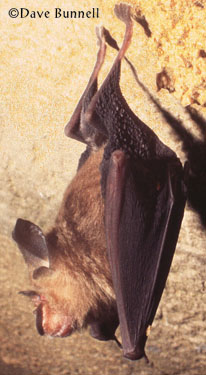 |
 |
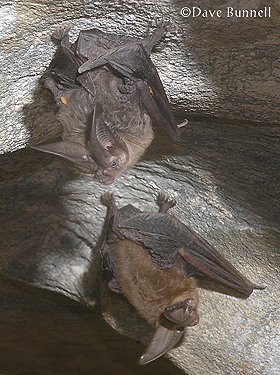 |
TroglophilesSome insects such as the cave cricket on the left and the millipedes on the right may live their entire lives in a cave, without developing the true cave adaptations of troglobitic species. Yet some adaptations may be seen in such animals, such as the extra-long antennae on the cave cricket shown at left, a plus when hunting for food in the dark.Such adaptations may well be an intermediate step in the evolution of troglobitic attributes. Salamanders, shown in the bottom two panels, are common inhabitants in wet caves, and a cave-adapted version is known from Texas |
 |
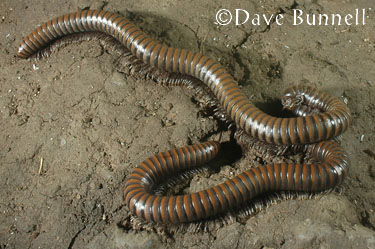 |
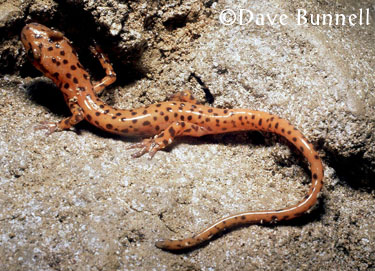 |
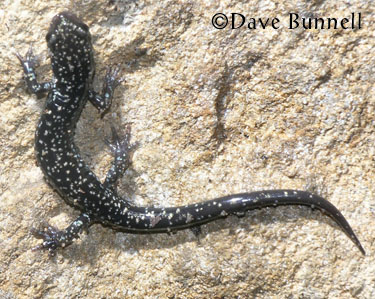 |
TroglobitesTroglobites are true cave-adapted animals: those that have acquired characteristics, through natural selection, that favor their survival in a particular cave environment. Typically these adaptations include an absence of visual organs (i.e., they are blind) and loss of pigmentation (they tend to be white, pink, or translucent). Troglobites tend to be small aquatic animals or insects or their kin; there are no known troglobitic mammals--not even bats. |
|
Here are two unusual troglobites. Above is a blind cave crab from Belize, in Central America. It lives near small inlets for water that bring in food. On the right is the Proteus, a blind aquatic animal known only from caves in the Dinaric Alps, which includes regions in Slovenia, Croatia, Bosnia and Herzegovina, and Montenegro. It looks similar to the Texas Cave Salamander mentioned above. |
 |
![]()
For more information on life in caves, check out these web sites:
Cave Biota web site
Cave Biology
web site
Bat Conservation
International
| Back to: | |
 |
Created January 2007 Author: Dave Bunnell |
